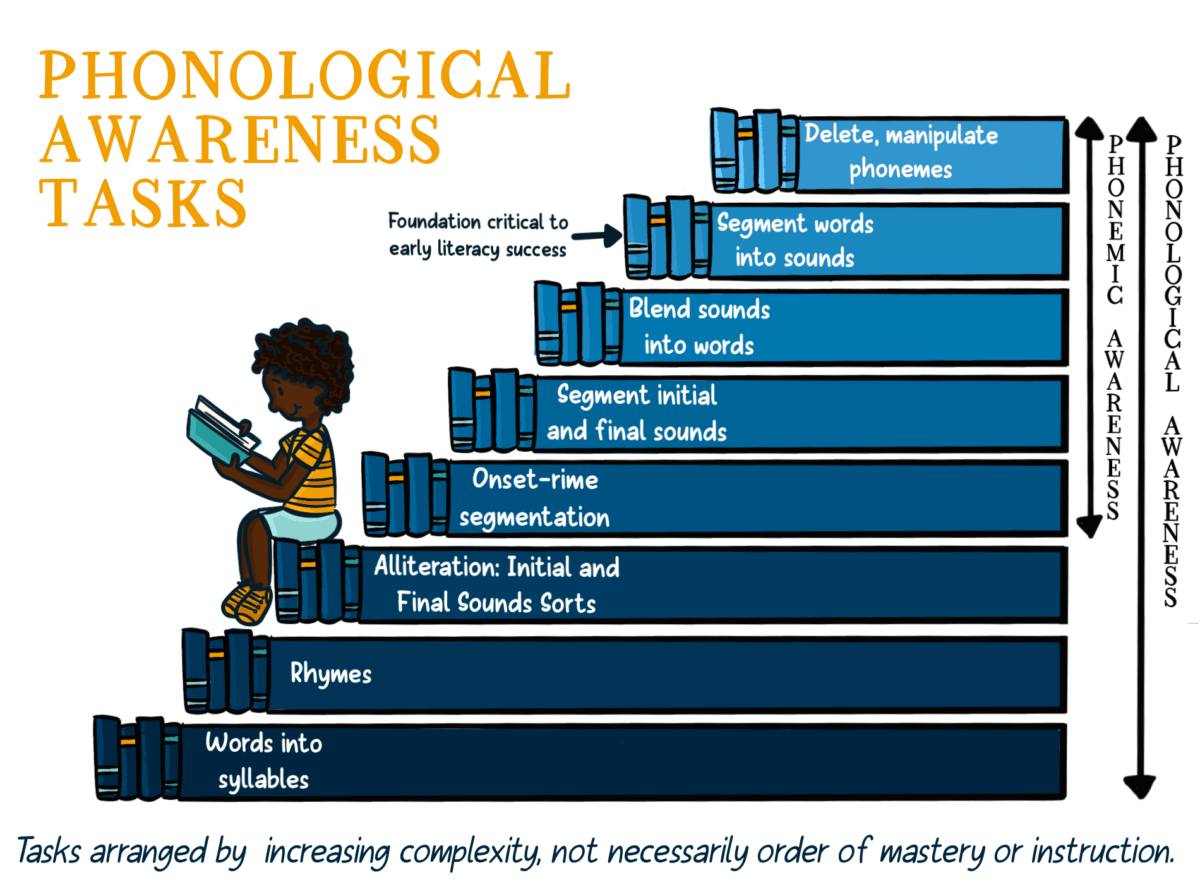News
Strategies for Phonological Awareness
What if all teachers knew strategies for phonological awareness?
At Hartwell The Educators University, we emphasize the importance of phonological awareness in early literacy development. Our graduates are equipped with evidence-based strategies to foster this crucial skill among their students. Phonological awareness is the ability to recognize and manipulate the sound structures of language, which is fundamental for learning to read (Adams, 1990). When teachers are skilled in these strategies, they can significantly enhance their students’ reading abilities and overall academic success.
Understanding Phonological Awareness
Phonological awareness encompasses a range of skills, including recognizing words, syllables, onsets, rimes, and phonemes (Gillon, 2004). It is a strong predictor of later reading success, as it helps children understand the relationship between sounds and letters (National Institute of Child Health and Human Development [NICHD], 2000). Developing these skills in early childhood sets the foundation for proficient reading and writing.
Effective Strategies for Teaching Phonological Awareness
- Explicit Instruction and Modeling: Teachers provide clear and direct instruction, demonstrating how to segment and blend sounds. For example, when teaching phoneme segmentation, a teacher might model breaking the word “cat” into its individual sounds: /k/ /æ/ /t/ (Ehri et al., 2001).
- Games and Activities: Engaging students in interactive games that focus on sound manipulation can make learning fun and effective. Activities like rhyming games, syllable clapping, and phoneme substitution exercises can enhance phonological skills (Yopp & Yopp, 2000).
- Multisensory Techniques: Incorporating multiple senses into instruction helps reinforce learning. For instance, using letter tiles, sand trays, or finger tapping can help students connect sounds with physical movements (Snow, Burns, & Griffin, 1998).
- Integrating Phonological Awareness in Daily Activities: Embedding phonological awareness activities into daily routines, such as during storytime or morning meetings, ensures consistent practice. Reading aloud and emphasizing sound patterns in words can naturally develop these skills (Brady, 2011).
- Progress Monitoring and Differentiation: Regular assessment of students’ phonological awareness skills allows teachers to tailor instruction to meet individual needs. Differentiating activities based on students’ progress ensures that all learners receive appropriate support (Lane & Pullen, 2004).
The Impact on Student Outcomes
Research indicates that systematic and explicit phonological awareness instruction can lead to significant improvements in reading achievement. According to a report by the NICHD (2000), children who receive targeted phonological awareness training are more likely to develop strong decoding skills and become proficient readers. Moreover, these skills are essential for preventing reading difficulties and ensuring long-term academic success (Torgesen, 2002).
About Hartwell – The Educators University
Hartwell is dedicated to empowering K-12 education leaders by fostering the growth of their people into competent and compassionate educators and leaders. Our mission is to ensure every child is taught by educators trained from a biblical worldview, emphasizing both excellence and empathy. Through our affordable online pathways to education degrees, we make careers in K-12 education accessible to everyone, enabling a new generation of teachers and leaders to inspire and educate future generations.
Discover more about our programs and scholarship opportunities at Hartwell.
References
Adams, M. J. (1990). Beginning to read: Thinking and learning about print. MIT Press.
Brady, S. (2011). Efficacy of phonics teaching for reading outcomes: Indicators from post-NRP research. In S. Brady, D. Braze, & C. A. Fowler (Eds.), Explaining individual differences in reading: Theory and evidence (pp. 69-96). Psychology Press.
Ehri, L. C., Nunes, S. R., Willows, D. M., Schuster, B. V., Yaghoub-Zadeh, Z., & Shanahan, T. (2001). Phonemic awareness instruction helps children learn to read: Evidence from the National Reading Panel’s meta-analysis. Reading Research Quarterly, 36(3), 250-287. https://doi.org/10.1598/RRQ.36.3.2
Gillon, G. T. (2004). Phonological awareness: From research to practice. Guilford Press.
Lane, H. B., & Pullen, P. C. (2004). Phonological awareness assessment and instruction: A sound beginning. Allyn & Bacon.
National Institute of Child Health and Human Development. (2000). Report of the National Reading Panel: Teaching children to read: An evidence-based assessment of the scientific research literature on reading and its implications for reading instruction (NIH Publication No. 00-4769). U.S. Government Printing Office.
Snow, C. E., Burns, M. S., & Griffin, P. (Eds.). (1998). Preventing reading difficulties in young children. National Academy Press.
Torgesen, J. K. (2002). The prevention of reading difficulties. Journal of School Psychology, 40(1), 7-26. https://doi.org/10.1016/S0022-4405(01)00092-9
Yopp, H. K., & Yopp, R. H. (2000). Supporting phonemic awareness development in the classroom. The Reading Teacher, 54(2), 130-143.

